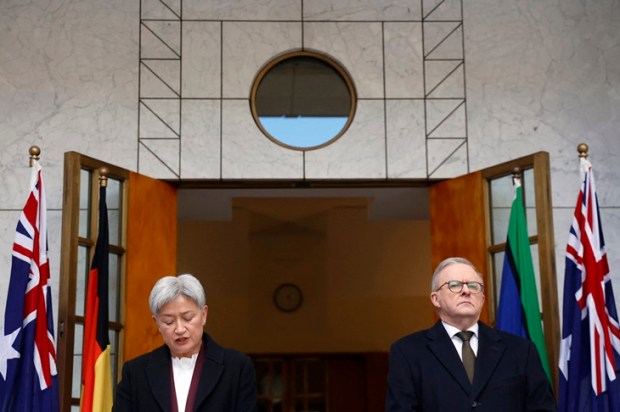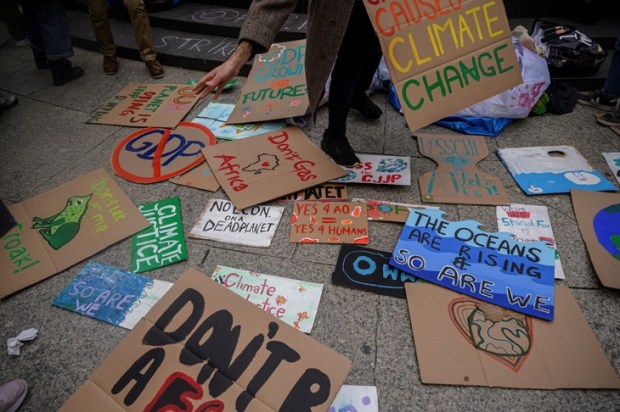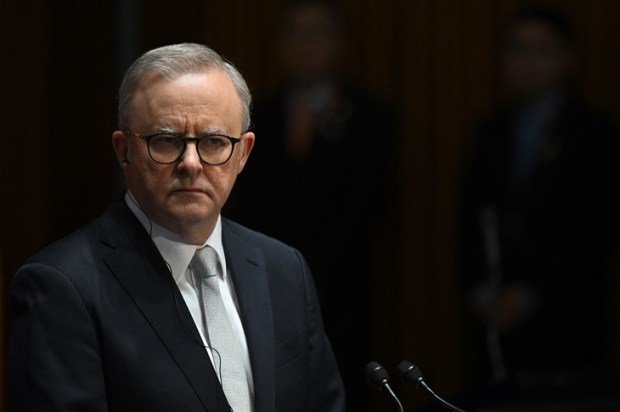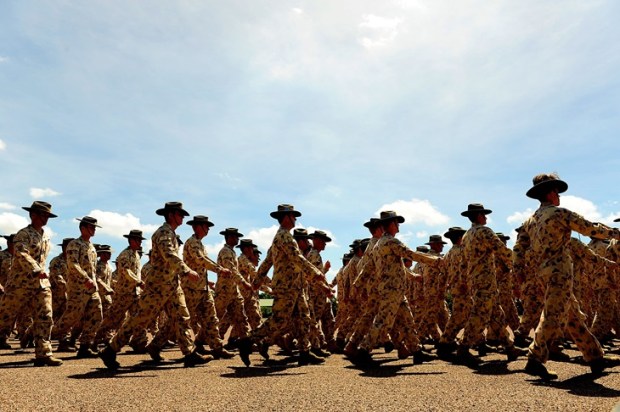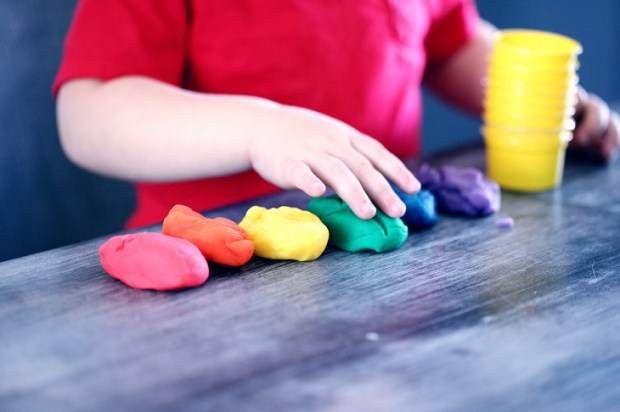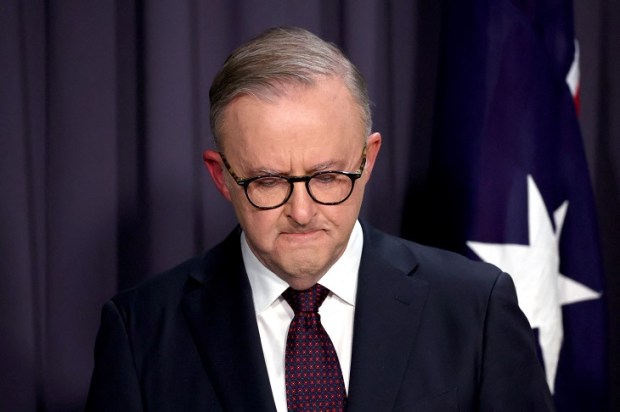Some years ago, I attended the annual congress of the NSW RSL. The keynote speaker was the Hon Dr Brendan Nelson, then Director of the Australian War Memorial. His speech was outstanding, and I was proud to lead a standing ovation for him. Here was a man, I thought, who despite not having worn uniform, really ‘gets it’ as far as military service and veterans is concerned. I was so impressed that I wrote him a personal letter to that effect. And there is no doubt that Dr Nelson did a terrific job as Director of the Memorial.
So, it was with no small sense of disappointment that I read recently, on the ABC website, that:
The War Memorial chair, former Howard government minister Brendan Nelson, revealed the Memorial’s governing council had decided they would have a ‘much broader, a much deeper depiction and presentation of the violence committed against Indigenous people, initially by British, then by pastoralists, then by police, and then by Aboriginal militia’.
An ABC RN Breakfast story by Patricia Karvelas reported:
Filmmaker Rachel Perkins, the director and producer of the ground-breaking documentary series The Australian Wars, which chronicles the battles fought on Australian soil, told me the announcement was a ‘watershed moment’. The long-running issue, she said, has at times been divisive, polarising, and politicised.
The Australian War Memorial has attracted fierce criticism for its minimal depiction of the frontier wars. Historians and Indigenous leaders have long argued that what occurred in this country was a series of battles and wars — a resistance against colonisation — and the failure to tell that history in the most important institution telling stories of war was a great silencing of truth.
Let me set Karvelas straight on one point. The primary purpose of the Memorial is not ‘telling stories of war’. It is to honour those thousands of men and women who have given their lives in defence of this country and its values. The storytelling derives from that aim.
Maybe I was wrong about Dr Nelson. Maybe he doesn’t really get it at all.
This proposal is contrary to the charter of the Australian War Memorial as expressed in the Australian War Memorial Act of 1980, which states:
Functions of Memorial
- The functions of the Memorial are:
- to maintain and develop the national memorial referred to in subsection 6(1) of the Australian War Memorial Act 1962 as a national memorial of Australians who have died:
(i) on or as a result of active service; or
(ii) as a result of any war or warlike operations in which Australians have been on active service;
(b) to develop and maintain, as an integral part of the national memorial referred to in paragraph (a), a national collection of historical material;
(c) to exhibit, or to make available for exhibition by others, historical material from the memorial collection or historical material that is otherwise in the possession of the Memorial;
(d) to conduct, arrange for and assist in research into matters pertaining to Australian military history; and
(e) to disseminate information relating to:
(i) Australian military history;
(ii) the national memorial referred to in paragraph (a)
(iii) the memorial collection; and
(iv) the Memorial and its functions.
- The Memorial shall use every endeavour to make the most advantageous use of the memorial collection in the national interest.
Just to be clear, according to the Act, Australian military history means the history of:
-
-
wars and warlike operations in which Australians have been on active service, including the events leading up to, and the aftermath of, such wars and warlike operations; and
-
-
-
the Defence Force.
-
The War Memorial Council has no mandate or remit to rewrite its own charter or Australian military history.
The Australian reported on October 8:
Professor Reynolds said the memorial’s pledge to build was now unequivocal, adding that both the AWM’s governing council and the Albanese government could not afford to back away from last week’s commitment.
Australian War Memorial director Matt Anderson told The Weekend Australian the new pre-1914 gallery would be opened in 2028 and be guided by several groups, including an Aboriginal and Torres Strait Islander advisory group which had already been established.
The curatorial team for the new exhibit will be established in late 2024.
This cannot happen without legislation to amend the Act. I would like to argue two reasons why such legislation should fail – one is emotional, the other intellectual.
I find the proposal personally offensive, as do many of the ex-service-people I have spoken to. Because I am a Vietnam veteran, and the Memorial has special significance to me. Not because I suffered unduly – indeed I emerged relatively unscathed from the experience. The principal, possibly the sole, purpose of the Memorial is to honour the memory of the thousands of Australian men and women who have given their lives in the defence of this nation and its values. And that brings me to the personal dimension. Those honoured dead have a face and a name to me. John Lee and Bernie Garland graduated from the Royal Military College Duntroon in 1967. That was in my first year at the College and I greatly admired both men. To me, at the age of 18, they seemed so much older and wiser and, at the age of 74, I still strangely think of them that way, although age shall not weary them. I attended both their funerals at the RMC Chapel and the memory of the distress of their young wives stays with me today. Bob Pothof, who graduated in 1968, and John Wheeler, who graduated in 1969, also never made it home. I was closer to John Wheeler than the others because he was only one year ahead of me and his death hit me hard. He was killed just before I arrived in South Vietnam.
I have never suffered any pangs of conscience about my role in what I think of as the Battle of Vietnam rather than the Vietnam War. Maybe I’m kidding myself, but I believe, that although it might be thought of as a tactical defeat, it certainly played its part in the ultimate end of the Cold War. Who know what dominoes may have fallen had the West not intervened in South Vietnam? The only distress I have ever felt about my involvement is when figures such as Robert McNamara have questioned its legitimacy. That was a kick in the guts to me. This implicitly devalues the sacrifices of all those who died in South Vietnam. That is, that they died in an illegitimate war. I imagine veterans of Afghanistan feel the same way.
And that is why I feel such anger that all Australians, but particularly those – most of whom were volunteers – who lost their lives in the two major conflagrations of the 20th Century, should have their sacrifice diminished by anything that might suggest the nation that they fought for was illegitimate in its conception.
And that brings me to my second argument. These atrocities which the AWM Council are planning on highlighting. There can be no doubt that atrocities were committed against Aborigines. But they were isolated incidents. Many of them were in reprisal for killing settlers or their stock – and no less reprehensible for that. Where atrocities were committed, they were crimes according to British law. We can argue about how effectively, or not, colonial governments dealt with them but the War Memorial is not the place to do it. They had nothing whatsoever to do with the defence of the nation, they do not form part of our military history and therefore have no place in the Australian War Memorial.
But what about the ‘Colonial Wars’? There is a new myth that has emerged in the last decade or so, and that is that the Aborigines fought a series of sustained wars of resistance. Rachel Perkins, the daughter of Charles Perkins, has produced a documentary film, The Australian Wars, in which she claims that up to 100,000 Aborigines were killed in these wars. If that were true it might provide a basis for inclusion in the AWM. At least I can understand why some people might think so.
But this story is demonstrably not true. The figure of 100,000 killed in some form of military action is totally implausible. The most authoritative database of incidents in which Aborigines were killed in clashes with whites is maintained at the University of Newcastle, under the direction of Professor Lyndall Ryan. Scores of historians have, over a number of years, scoured the historical record to dredge up every last Aboriginal death they can find. They have documented 416 incidents that reportedly resulted in the death of some 11,000 Aborigines.
Keith Windschuttle, Michael Connor, Scott Seymour, George Brown, Roger Karge, Rod Moran, and myself (amongst others) have conducted audits of this database and we have all identified serious discrepancies. In most of the incidents reported, the number of Aboriginal deaths has been based on estimates and they almost always err on the high side.
But regardless of that, even if the figure of 11,000 deaths is correct, how is it possible that this legion of researchers, anxious to plumb the very depths of this well, could have missed 90,000 deaths?
To include, in the AWM museum, any mention of ‘colonial wars’ involving the deaths of 100,000 Aborigines would not only be an insult to those whom the Memorial is supposed to honour, it would also be a travesty of rational and rigorous thinking.
What happens next if these activists get their ‘Colonial Wars’ gallery? Will they want a tomb of the unknown Aboriginal warrior placed next to the existing tomb in the main Hall of Remembrance? Don’t be ridiculous, I hear you say. That’s just hyperbole – it will never happen. Well, here’s what activist historian Henry Reynolds, one of the main architects of this obscene proposal, said in last weekend’s Canberra Times:
The most significant symbolic act would be placing a tomb for the unknown warrior next to the grave of the unknown soldier. Those who fought for empire would be at rest with those who fought against the empire.
If they get their special gallery, can the Tomb of the Unknown Warrior be far behind?
Especially if they also get heir third chamber of Parliament.
What’s driving this cave-in on the part of the War Memorial Council is, you guessed it, money. They want $550 million for an expansion project. This piece of silver is the price they are prepared to pay to get it. Is this expansion so desperately needed that the Council is prepared to endorse this monstrous sacrilege? It’s already a very impressive edifice. As a veteran, I don’t want it at this price.
I have launched a change.org petition, Hands Off the Australian War Memorial. At the time of writing, it has 2,250 signatures.
I don’t know how many signatures it will take to jolt the members of the Memorial Council to search harder for their cojones. The ‘No Body, No Parole’ petition in relation to murdered mother Lyn Dawson attracted 30,000 signatures – although that was a simple and (almost) unarguable proposition – so I suspect we’ll have to do a lot better than 2,250. That said, I have no doubt we face an uphill battle given that, firstly, conservatives tend to be petition shy and, secondly, the fact that this proposal emanates from the Council itself and involves yet another sop to the Aboriginal grievance industry, would lend it a certain (spurious) legitimacy in the eyes of many.
If this proposal goes ahead it will add to the growing and tiresome collection of concessions we already make to Aborigines – the flags outside every public building in the land (and in our Parliaments), the grating and contrived ‘welcome to country’ ceremonies at every public event, the renaming of our towns and landmarks (particularly by the ABC), the grandstanding in Parliament by the odious, and mockery of the oath by ‘Senator’ Lidia Thorpe etc…
Once it’s in, it will be impossible to remove. Let’s nip it in the bud now.
So, if you haven’t signed my petition, can I urge you to please do so.
And if you haven’t promulgated the link to at least 10 other people, can I ask you to please consider doing this also.
And a huge thank you to those who have already signed and given this petition the momentum it needs to go to the next level. I want 10,000.


